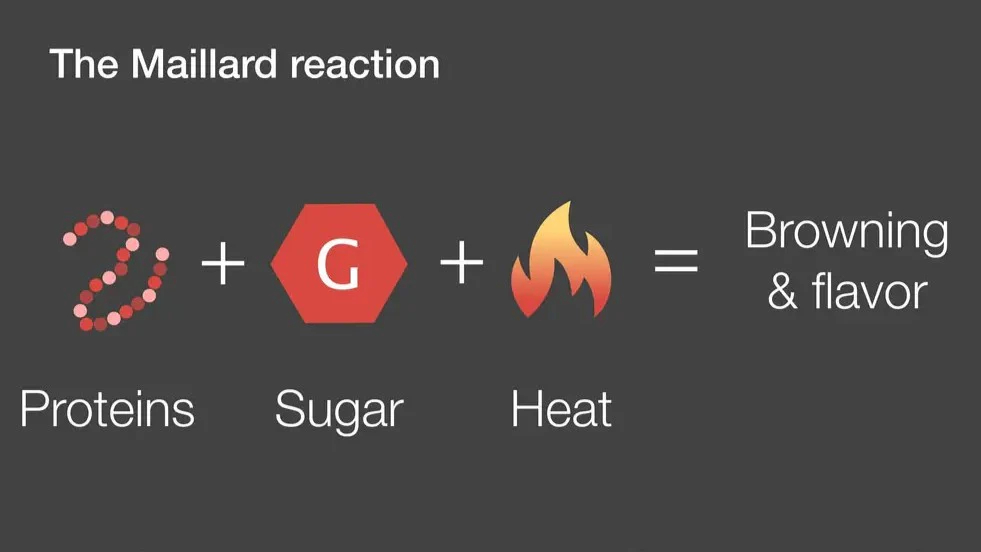Maillard Reaction

- 10 May 2024
Why is it in the News?
The Maillard Reaction elucidates the intricate chemical processes responsible for the diverse array of flavours, aromas, and textures found in foods.
What is Maillard's Reaction?
- The Maillard reaction is a complex chain of chemical reactions that occurs when heat is exposed to amino acids and reducing sugars.
- The Maillard Reaction, named after the French scientist Louis-Camille Maillard, is a chemical phenomenon observed when amino acids, essential components of proteins, and sugars undergo heating.
- This reaction influences the taste, scent, and consistency of food items.
- It characterizes a non-enzymatic browning process in food, where colour alterations manifest without the involvement of enzymes.
How does the Maillard Reaction Induce Browning in Food?
- The Maillard reaction initiates a complex chemical process that yields various products. Chemist J.E. Hodge first delineated its steps in 1953 to simplify its understanding.
- An array of foods, from meats to bread to vegetables and coffee beans, contain both sugars and protein components.
- When subjected to heat, these sugars and proteins undergo a condensation reaction, forming an unstable compound known as Schiff base.
- This Schiff base undergoes rearrangement and dehydration, yielding diverse intermediate compounds.
- These intermediates further react to generate essential flavour components, enriching the food's aroma.
- Some intermediates undergo rearrangement, resulting in a more stable product. These products serve as vital precursors to melanoidins, pivotal in imparting the food's characteristic brown hue.
- Continued transformation, including condensation and polymerization, culminates in the formation of melanoidins—nitrogen-containing compounds responsible for the food's distinctive brown colouration.
What are the Factors Affecting the Reaction?
- The pace and magnitude of the Maillard reaction hinge on various elements, including temperature, acidity, moisture levels, and the composition of proteins and sugars in the food.
- Optimal Temperature: Temperatures typically fall within the range of 110 to 170 degrees Celsius, with levels surpassing this threshold potentially resulting in food burning and imparting bitter flavours.
- Elevated temperatures generally expedite the reaction, whereas acidic environments and moisture content can impede it.
- Hence, foods tend to brown more rapidly at higher temperatures, and dry items like bread crusts often acquire a rich brown hue during baking.
